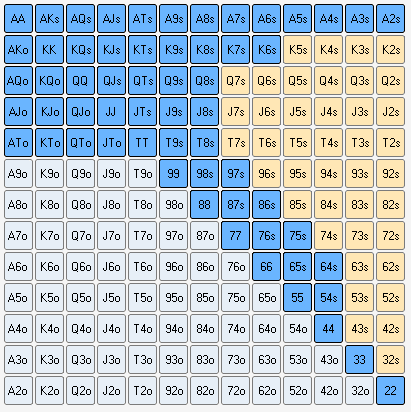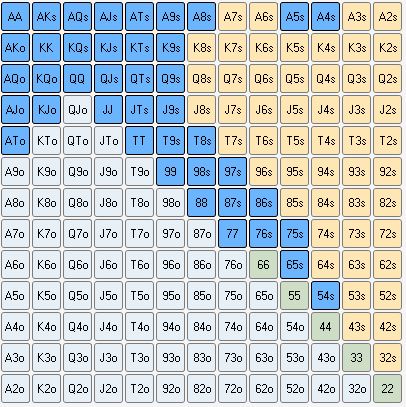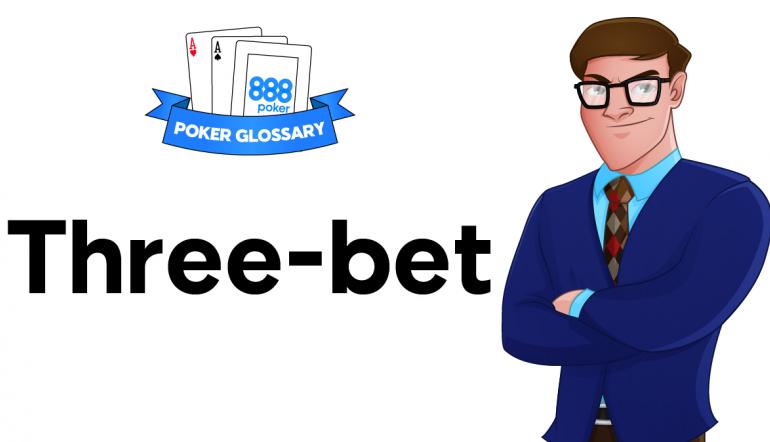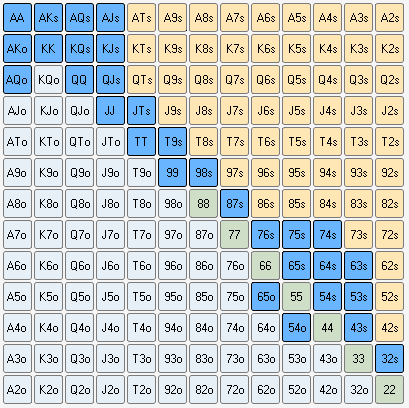Poker 3 Bet Charts

The Three Bet
Poker 3 Bet Charts
This is a discussion on Move Beyond the Hand Chart: 3-bets & 4-bets preflop in No Limit Hold'em Cash Games within the online poker forums, in the Cash Games section; 3-bets & 4-bets preflop in No. All About 3 Betting in Poker The Three Bet. One of the common definitions you will hear as you play poker is “3-bet”, or “three-bet”. A 3-bet as most players use the term means the act of putting in the third bet, technically the second “raise”, the “3-bet” during any given round of action.
One of the common definitions you will hear as you play poker is “3-bet”, or “three-bet”. A 3-bet as most players use the term means the act of putting in the third bet, technically the second “raise”, the “3-bet” during any given round of action. It’s only in recent years that the term has become popular, indicative of its use during online play.

For flop games, such as hold’em and Omaha, the pre-flop 3-bet is technically different than the post-flop 3-bet. In these poker games blinds are used, and the act of posting the small and big blinds is considered the first “bet”. Subsequent players, beginning with the “under the gun” (UTG) player to the big blind’s immediate left, have the option of calling that first bet (the amount of the big blind), or folding or raising. In a typical game, the first pre-flop raise is technically a “two-bet”, but you’ll never hear it called that. Instead, it’s when another play makes a second raise, going over the top of the first raiser, that the “three-bet” term is used. Below is a visual of what a pre-flop 3-bet looks like.

In post-flop play, the 3-bet consists of an initial bet, a raise, and then a re-raise (perhaps by the initial bettor). Since the initial bet itself can be sizable, the post-flop 3-bet is proportionately larger in most instances than its pre-flop counterpart. In cash games and in the late stages of tourneys, 3-bets often involve all-in moves by one or more players, though you’re just as likely to hear the words “pushing” or “jamming” (moving one’s entire stack into the middle) in those instances.
What Does a 3-Bet Mean?
A 3-bet, which is always a form of a re-raise is designed to be an indicator of a true premium hand. The 3-bet is a shot over the bow of the initial raiser, designed to capture that pot right there. The intent of the 3-bet is to say to the initial bettor, “Yeah, you may have a good hand, but I’ve got a better one.” One common variation involves the initial raise coming from a late position, the button player or the cut-off (to the button’s immediate right), and the 3-bet is made by the small or big blind, who may assume the button or cutoff is attempting to steal the blinds. Overall, the 3-bet is traditionally one of the strongest moves a player can make, trailing perhaps only the all-in push and the check-raise in its ability to change a hand. It’s supposed to mean that the player making the move has a very strong hand, though this being poker, that is not always the case.
Making Your Own 3-Bets
The use of 3-bets is best done selectively, at opportune moments. Many hyper-aggressive players 3-bet with a wide range of hands, including many garbage hands, in the nature of bluffs. Most 3-bets, however, are done with big hands.
When to 3-bet a hand and when to just call (called a “smooth call” or “smoothing”) is one of the trickiest lessons players must learn. Knowing your opponents’ tendencies is vital to success, because the best poker players play their opponents as much as their own hands. A 3-bet works best against fairly loose players, some of whom are described as “calling stations”, who simply cannot fold marginal holdings when prompted. Another successful type of 3-bet can be done against a player who might over-value the long-term prospects of the game or tourney in deference to what might happen in that specific hand. He might be surrendering a bit too much of his chance to win in hopes of getting a better opportunity in a later hand.
Then there are bluffs. The bluff type of 3-bet is called a “re-steal”, and properly executed, it can be one of the most profitable moves in a player’s arsenal. However, like any good play, using it too much is one of the quickest ways to go broke. Other players will eventually react to a player that is putting in too many 3-bets, and sooner or later, the player putting in those over-the-top bets will be “looked up” (called) by his opponent. However, if you’re a steady, conservative player, 3-betting an aggressive foe will work more often than you might believe. Those players are trying to steadily make small gains against your perceived, relative passivity, and when you fight back they’ll often go try another door.
Poker 3 Bet Charts Horse Racing

Defending Against the 3-Bet
Defending against the 3-bet boils down to understanding both your opponents and the circumstances of the game. Against a tight opponent who plays few hands, a 3-bet invariably means a monster and you can ditch all but the largest hands against this opponent. Even if he’s on a rare bluff, his natural tendencies against bluffing should serve as a warning.
Aggressive, late-position players will often three-bet with holdings such as middle pairs, AK or AQ, and depending on your own hand, it’s often correct to play or even to put the 4-bet in and take your chances. Be aware that with position and with correct “pot odds” – referring to the relationship between the amount of money already in the pot and the total amount a player stands to win – a late-position player may be “priced in” to making his own call with more inferior hands than you might hope.
Author:Joseph Falchetti (twitter)
(C) Copyright PokerWebsites.com, 2018
This article will focus on pre-flop 3-Betting
So what is a 3 bet in poker?
Poker 3 Bet Charts Poker

Poker 3 Bet Charts Odds
- A 3 bet refers to any time a player makes the third bet in a pot. 3 bets can happen on any street, but this article will focus on preflop 3betting. The mandatory blinds count as the first bet, the open-raise counts as the second bet, and any raise following this will be a 3 bet.
- ' The 3 bet most commonly refers to the time when you raise the pre-flop opening raise of your opponent'
- The same rule applies to the'4 bet' and the '5 bet' (It's basically just a shortened abbreviation for saying 'The third bet in the round')
- For value
- As a bluff
- To set up a post-flop steal (or pre-flop steal)
- Let’s suppose player A opens on the button. Player B who is in the big-blind knows player A likes to open an extremely wide range from the Button. Player B decides to 3 bet bluff.
- Player A however, by now, knows that player B knows that he is open-raising wide. Player A decides player B’s 3 betting range is wide enough and light enough to put In a 4 bet bluff. Player B though, knows that player A knows his 3 bet range might be light, and decides to 5 bet bluff assuming player A’s 4 bet range is sufficiently light.
- Usually the 3bet/4bet/5bet game ends here, because 100bb deep the stacks will often be all-in. Just because player A and player B are assuming each other is light though, that doesn't mean they are. Perhaps player B, knowing player A likes to 4 bet light, started 3 betting purely for value. Or, perhaps player A, knowing player B is capable of 5 bet jamming light, started 4 betting purely for value. If either player had made such an adjustment, they’d find themselves in a very profitable spot.
So when should we 3 bet???
There are 3 main reasons why you want to 3 bet. Before you 3 bet you should have one of them in mind:
Value
We 3 bet for valuebecause we believe our hand to be stronger than our opponents hand, so we want to milk as much money out of our opponent as possible. The best players to target with value 3 bets are those with a low fold-to-3 bet. This means that they will call your 3-bet with a decent amount of worse hands. A common mistake is to 3 bet a hand which may seem like a strong hand, but against the range that villain continues with, is relatively weak.
In a 6-max game, especially at lower stakes, you should only be 3-betting premium hands for value: 99+, AJss+. Please note that this range will widen if you face a loose opponent. So if you're facing up against an opponent who's going to call all of your 3-bets no matter what hand he is holding, then you need to widen your 3bet range, 3bet more hands and raise it up more.
Generally you want to 3 bet less often for value against early position opens. 3 betting vs early opens looks very strong and you may end up isolating yourself against a range you don’t do well against. Even with the top end of your value range, you may be getting folds more often than you’d like, and flatting becomes a very viable option. Even hands as strong as QQ and AKo, you can strongly consider flatting vs an UTG open-raise.
To summarize you want to be value 3 betting against players with a 'low fold to 3 bet (Ft3bet)' and a high 'Attempt to steal (ATS)'.
Bluffs
You want to target players with a high Ft3bet and a high ATS. If a player is not folding often enough to 3 bets then you will not have a profitable 3 bet bluff. A high ATS means villain’s range will be wider in general and he will find it harder to combat 3 bets.
Most often you will want to play 3 bet poker as a bluff against positions where your opponent's range is going to be traditionally wide, i.e - BU, CO, and SB opens. However, a better player might perceive your 3 bets to be lighter against these positions and will play back more frequently. Against better opponents you can make advanced plays such as 3 bet bluffing vs UTG or MP opens. They won’t expect you to be bluffing here and may make some very tight folds.
The hands you 3 bet bluff with should be those not quite strong enough to call, but still with some potential. Hands like Q9s, T8s, Axs, Kxs. If a hand is strong enough to call, you should not be 3 betting it, for the reasons given in the KQo example. If villain is the type who will adjust by 4 betting light, you will also want to include some of the top value hands in your 3 betting range. 3 betting the top end and bottom end of your range is referred to as 3 betting a polarized range.
To Set up a Steal
Perhaps villain is the type that calls a lot of 3bets but plays fit-or-fold on the flop. You can 3 bet with the intention of taking it down on the flop. You can 3 bet pre-flop with both bluffs and value-hands, but it will possibly be easier and higher EV to do it with a merged-value range. (You won’t lose EV by not flatting your medium value hands when villain has a low Ft3bet)
In slightly more advanced games you can also 3 bet with the intention of setting up a pre-flop steal. Perhaps you know villain is going to be 4bet bluffing you a ton, so you can 3bet with the intention of 5 bet jamming as a bluff. Good hands to choose are those that have the best equity if they do end up getting called, eg pocket pairs like 88, or Axs type hands. The situations you can profitably do this at the micro-stakes are somewhat rare, but they do exist.
I am ready to take my poker game to the next level!
The preflop 3bet/4bet/5bet 'mind game' battles:
This is an entire pre-flop game in itself. The objective is to adjust the ranges you 3bet/4bet/5bet in an attempt to find an edge against your opponent’s own 3bet/4bet/5bet ranges.
The idea behind the 3bet/4bet/5bet game can be demonstrated using a simple example:
For the above situation to take place, first the correct game dynamic needs to be established. At micro-stakes, a dynamic conducive to 5 bet-bluff jamming is pretty rare. The majority of players aren't 4 betting light enough for a 5 bet-bluff to be profitable. People do 3bet light a decent amount however, so you should still be focusing on your 3 bet/4 bet ranges. Usually you only want to 5 bet shove for value. This might sound “unbalanced”, but in reality it isn't. You are just selecting the appropriate 5 bet frequency to exploit your opponents, i.e 95% value 5% bluffs.